When TED held the first TEDWomen conference in 2010, the idea raised a lot of grumbly questions. Is it for women only? By women only? Women attend the regular TED conference, so what is the point?
The TED organization and its TEDWomen partner, the Paley Center, stood firm: it was an idea they thought worth trying once, to put the focus on the underserved majority population (50.8% in the United States).
It was a raging success. Madeleine Albright spoke candidly about the challenges women face and the importance of support, memorably saying, “there’s a special place in hell for women who don’t help other women.” Hillary Clinton raised the roof with a surprise visit. And Sheryl Sandberg made a last-minute decision to ditch her prepared speech and give a personal talk about women and leadership, beginning the path that would lead her to her bestselling book, Lean In.
Last week in San Francisco, the TED/Paley team held a second TEDWomen conference. This time, no grumbling.
Fourteen hundred TEDTalks – “Ideas worth spreading” – have been viewed one billion times since they were made available for free online viewing in 2006. Being able to indulge in a brief, illuminating 18 minutes of discovery during a desk lunch break is wondrous; an immersive full day is like hooking up your brain to an IV drip of Red Bull. In a great way.
A brief insight into the conference itself, and then my takeaway on the ideas worth spreading.
Spirit of sharing
It is the people, of course, that make attending a conference so different from watching talks online.
Applying for TEDWomen – an essay-writing ordeal reminiscent of college applications – is more intimidating than being at the conference. The conference itself is like spending the day with the most curious, caring, engaged people you know (and yes, most of them are women).
In the busyness of regular life often we only have time for transactional conversation, a quick exchange of information or logistics. At TEDWomen all the attendees have invested in this day – time, money, the mental energy to apply – and they are present in a way that makes me realize how distracted we often are in our daily lives.
I don’t know what the male-dominated TED is like, but the women know how to keep it real. No power suits (TED is casual), business card pushing, or elevator speeches. Simply 650 women, plus a few intrepid men, connecting as friends.
The difference a day makes
Both TEDWomen conferences were just one day, just a taste of the four-day immersion that is the annual big-daddy TED conference. But a single day works.
- Women have many obligations, and a shorter conference is more achievable.
- A single day keeps costs lower. While the regular TED conference is now $7500, TEDWomen SF was $975, substantially less than TEDWomen DC. It’s very expensive, but one day at TEDWomen over a trip to Vegas? Easy.
- Women know how to make the most of what we have. We talked while waiting for the shuttle bus or standing in bathroom lines. We get a lot out of a day.
And now for the ideas…
Power of persistence
Hands down, the most powerful talk of the day belonged to the powerhouse Diana Nyad – at 64 years old, the first person of any age to swim the 110 miles from Havana to Key West without a shark cage.
Nyad is living proof that age is only in your head. She had the dream at 20 years old to swim from Cuba to Florida. Four decades, four failed attempts and one near-death jellyfish attack later, she told her team, “Let’s find a way.” They did.
I can’t do Nyad’s talk justice – you’ll have to watch it when it goes online – but Nyad had the room breathless. We all laughed when she spoke of being “almost there” with 15 hours left to swim.
And my favorite line about achieving your dreams:
“It’s who you become along the journey, not what you get at the end.”
Trying and failing is how character is built. It’s a powerful message, especially for the instant-gratification generation. Life is not about what we get, or where we get to, it’s about who we become by striving every day.
Even cells have gender
No surprise that women and men behave differently, but who knew that male and female cells behave differently too? Dr Paula Johnson, of the renowned Brigham and Women’s Hospital in Boston, made a strong case for studying the impact of gender on disease treatment.
We already know heart attacks in men present differently from heart attacks in women. We know male and female brains react differently to the same information. Female nonsmokers with lung cancer die at three times the rate of male nonsmokers; their tumor cells behave differently, and our treatments are geared toward men.
What else don’t we know? Shouldn’t we find out?
Current medicine is men’s-size-fits-all. We have the studies and the knowledge; we simply need to researchers to look at gender as an important variable so that we can study the impact of different treatments by gender.
Dr Johnson’s beloved grandmother declined rapidly with untreated depression, and her mission is to save other women from deaths due to misguided diagnoses and uninformed treatments. For all our sakes, I hope her idea spreads, and soon.
Technology plus empathy
The remarkable inventors of TEDWomen had a common theme: technology alone may be cool, but empathic technology can change lives.
Women didn’t invent the Segway, or Google Glass – cool technology with uncertain applications. Women invent products to solve real-life problems.
- Jessica Matthews of Uncharted Play makes play equipment – balls, jump rope – that generate and store electricity as they are in play.
- Krista Donaldson of D-Rev engineered a low-cost, high-functioning prosthetic knee that can accommodate a range of motion – sitting cross-legged, squatting – that restores lives and livelihoods for amputees in the Third World.
- Jane Chen of Embrace created a low-tech baby warmer that has substantially reduced infant mortality in areas where there is no money, power or facilities for incubators.
- Dava Newman of Massachusetts Institute of Technology is designing a smart, flexible spacesuit that can improve astronauts’ mobility as well as help their bodies adjust to the physiological demands of weightlessness.
Women also see problems that men might not even perceive as such. Rupal Patel of Northeastern University, a computer scientist and speech specialist, has come up with a way to individualize prosthetic voices so that a 5-year-old girl with a speech disability does not have to sound like Stephen Hawking. She can have the voice she was meant to have.
When Patel tested her VocaliD innovation on a young boy, the boy’s first words were, “I’ve never heard ME before.”
The type of problem only a mother might see – and persist in solving.
As Jane Chen said, “Technology is an enabler. There must be intent…We can solve problems with love – but technology powered by love can solve the problems of the world.”
Women on boards
At the morning breakfast at Twitter I attended, the place was abuzz with the news that Marjorie Scardino, head of UK’s Pearson, had just been appointed Twitter’s first female board member.
It’s still challenging for companies to find female board members that are traditionally qualified the way their male board members are. But I think Dr Johnson and the many female innovators here would ask all-male boards to consider the fundamental importance of having at least one perspective on the board that represents half its customer, employee, and shareholder populations.
It’s not enough to have female employees. Employees toe the line, but board members represent investors and provide strategic guidance. Having at least one well-considered female voice is fundamentally smart business.
Ubuntu – I am; because of you
The strongest messages of the day on collaboration came, unexpectedly, from the men.
Boyd Varty, fourth-generation owner of Londolozi Game Reserve in South Africa, spoke movingly about the African spirit of ubuntu – humanity, kindness – in a land where co-existence with fellow beings is viewed as a necessity and privilege. Varty witnesses the spirit of ubuntu not just in people but animals as well and learns a universal concept – that our own well-being is deeply tied to the well-being of others.
Varty’s message was particularly poignant as his talk came immediately after lunch break, when we learned of the death of the great champion of unity, Nelson Mandela. A friend of the Varty family, Mandela took refuge at Londolozi after his release from prison in 1990. One of only two male speakers, Varty won the room over with his earnest charm, and I thought at the end that he might be safer in wilds of Africa than in the roomful of estrogen.
In an entirely different way, Hunter Lee Soik‘s talk about his dreams database was also a message of togetherness, as his Shadow app draws patterns from the aggregation of dreams worldwide. Even in our unconscious state, we are part of a collective experience.
The idea of mutually beneficial ecosystems was reinforced a day later on my post-conference field trip, on which Sue Conley of Cowgirl Creamery talked about the symbiotic relationship she has with the dairy farmers and other cheesemakers in Marin and Sonoma. They all benefit from one another’s existence.
There’s plenty of work to do in this world. We are stronger together than alone.
A conference of one’s own
TEDWomen itself is an idea worth spreading. I know all the TED conferences are about bringing together people from many disciplines to share ideas, but it’s a unique experience for diverse women to have this dedicated community.
The women I met, like all the cool women in my life, were multifaceted explorers – the chef turned corporate lawyer turned mac-and-cheese restauranteur, the commercial architect turned social investor. I heard that one of the magnificent poets who presented, Azure Antoinette, was a human resources manager who never wrote until a client assignment helped her discover her voice.
What connects everyone is their curiosity, persistence and desire to keep learning and sharing – no TEDWoman is going to Madeleine Albright’s special place in hell.
Doesn’t a community like this deserve its own forum?
TEDWomen 3: an idea worth spreading.

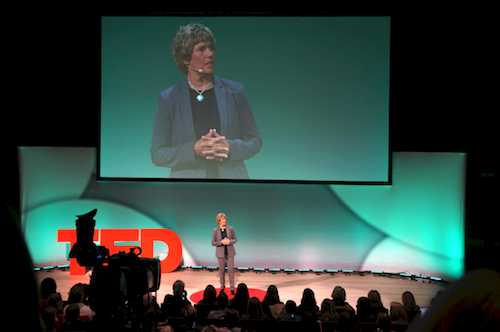
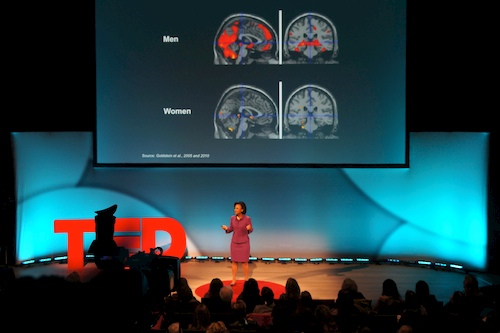
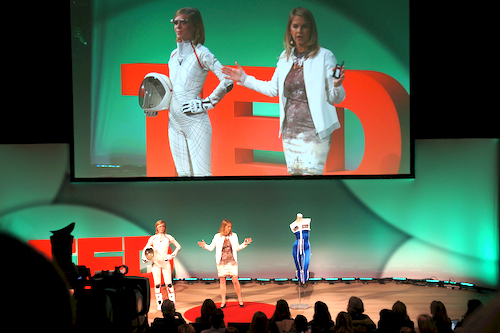
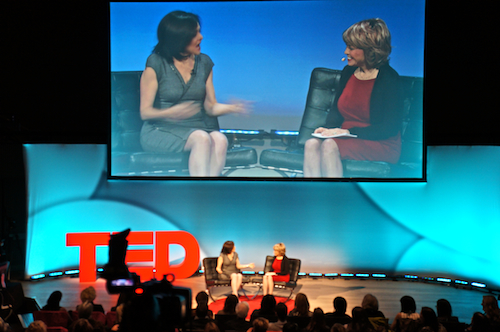




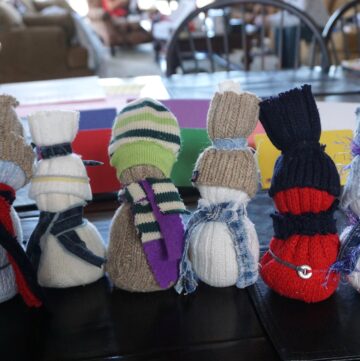
Hi Lilian,
As usual another engaging post!! I am going to have to make an effort to get to TED Women SF next year…no excuses!!! Love your blog for all of your topical posts, sharing of interesting and useful information as well as recipes that have kept my family fed on more than a few evenings!!! You made me smile today….no special place in hell for you!!!;-)) xo
Sorry…..posted this in the wrong spot first and couldn’t delete…feel free to do so!!
hi michelle – thanks so much! as you know, i wander off topic here every so often when something comes up that i think is worth sharing. very glad to know you don’t mind. =)
Always love hearing anything you want to share. I feel a little more empowered just reading this post, so I could only imagine what actually going to the conference must be like. So very cool.
thanks, jamie! you are such a sweeite. =)